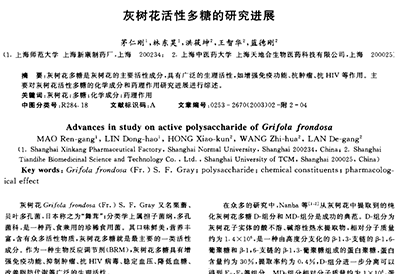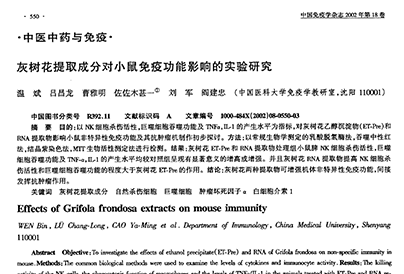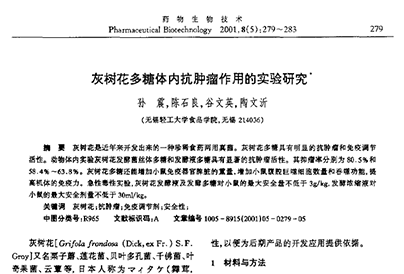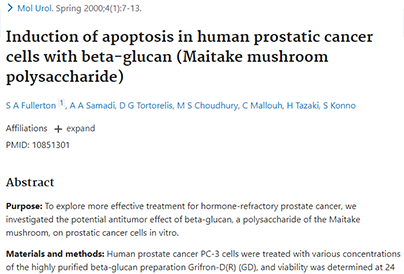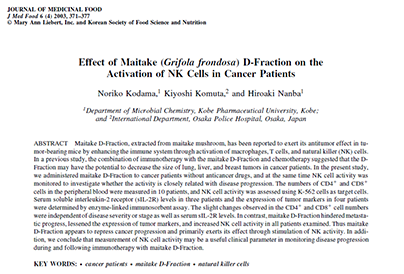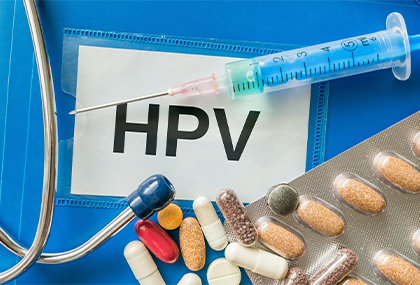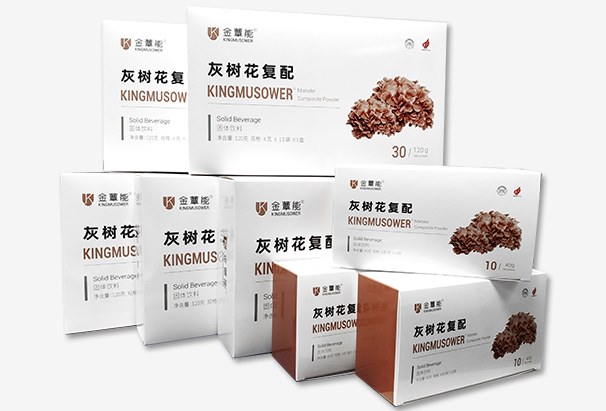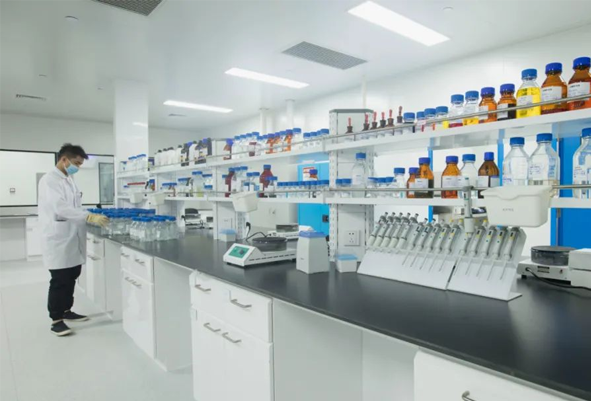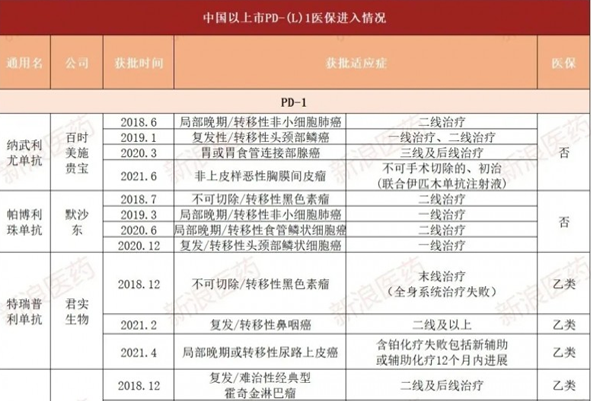In 1995, the China Anti Cancer Association initiated the National Cancer Prevention and control publicity week, which is scheduled from April 15 to 21 every year.
According to who cancer experts, 10 million people died of cancer worldwide in 2020, and 7.5 people in China were diagnosed with cancer every minute.
But! One third of cancers are completely preventable; One third of cancers can be cured by early detection; One third of cancers can use existing medical measures to prolong life, reduce pain and improve the quality of life.
We sorted out 5 high-risk cancers, including lung cancer, liver cancer, gastric cancer, colorectal cancer, breast cancer, early symptoms and cancer screening methods.

Lung cancer early screening
Lung cancer has always been the title of "cancer king", which is closely related to the high incidence rate and high mortality rate of lung cancer.
For high-risk groups, we must go to the hospital for lung cancer screening as soon as possible.
★ high risk group of lung cancer
● age
The age is more than 45 years old, and some countries or regions are more than 50 years old.
● smoking history
Relationship between smoking and lung cancer: the smoking index of lung cancer = the number of cigarettes per day x the number of years of smoking. If the smoking index is greater than 400, it is the high-risk group of lung cancer.
● past medical history
People who have had lung diseases before, such as tuberculosis and benign tumors, have decreased resistance with age, and may also develop lung cancer.
● family history of lung cancer
People with a family history of lung cancer, over the age of 40 or 50, and smoking belong to high-risk groups.
● career related factors
People engaged in petrochemical, cement, coal and other related occupations.
★ early symptoms of lung cancer
Cough, expectoration and bloody sputum are the symptoms that may appear in the early stage of lung cancer. Because they are not typical, they are easy to be misdiagnosed as acute bronchitis, pneumonia or recurrence of tuberculosis.
In addition, unexplained chest tightness, back pain, and even sudden acromegaly, which is the sudden swelling of fingers, may also be one of the atypical manifestations of lung cancer.
It is difficult to associate lung cancer with clinical symptoms alone. If there is any discomfort, it is recommended to go to the hospital for examination in time.
★ lung cancer screening
For high-risk groups, it is recommended to do low-dose spiral CT once a year as screening.
For the long-term existence of irritating cough, changes in the law of cough, blood in sputum, or repeated inflammation in a part, fiberoptic bronchoscopy should also be done, which can help to detect lung cancer in the early stage.
Early screening of liver cancer
According to the big data report on liver cancer in China released in 2018, there are 854000 new cases of primary liver cancer worldwide and 466000 in China every year, accounting for about 55% of the world, which means that more than half of the world's new liver cancer is in China.
★ high risk factors of liver cancer
● viral hepatitis
Hepatitis B virus infection is the main cause of primary hepatocellular carcinoma in China. More than 85% of primary hepatocellular carcinoma is related to hepatitis B virus infection or portability. In addition, viral hepatitis such as hepatitis A, hepatitis C, hepatitis E and hepatitis D are all related factors leading to liver cancer.
● drinking
Alcoholic liver disease is one of the pathogenic factors of liver cancer, which is closely related to excessive drinking.
● obesity
Available data show that both nonalcoholic fatty liver disease and nonalcoholic steatohepatitis can cause liver cancer, and these two diseases are closely related to obesity.
● moldy food
Moldy food is easy to produce Aspergillus flavus. Aflatoxin produced by Aspergillus flavus is a clear carcinogen of liver cancer.
★ early symptoms of liver cancer
Liver cancer is a silent killer. There is no typical clinical manifestation in the early stage of liver cancer. Most early liver cancer is found out through physical examination. Once symptoms appear, it may mean that liver cancer has reached the middle and advanced stage. Advanced liver cancer is mainly manifested in gastrointestinal symptoms and systemic symptoms, such as fatigue, weight loss, anorexia, abdominal distension, changes in stool habits, etc. a small number of patients are accompanied by yellow eyes, or sudden severe pain in the right upper abdomen, ascites, etc.
★ liver cancer screening
Blood test, check the number of alpha fetoprotein (AFP), and copy number of hepatitis B virus. B-ultrasound examination, liver examination with ultrasound, is a very convenient, repeatable, short-time and inexpensive examination method. It is suggested that high-risk groups of liver cancer should be screened once every 3-6 months.
Early screening of gastric cancer
★ high risk factors of gastric cancer
● dietary factors
Some foods contain some carcinogens, such as nitrosamine, aflatoxin, 3,4-benzopyrene, etc. these carcinogens may lead to the occurrence of gastric cancer. Aflatoxin is more common in moldy food, and nitrosamine is more common in pickled and smoked food, such as sausage and bacon.
Bad eating habits, such as eating too fast, too hot, and eating with bad emotions.
● infection factors
For example, infection with Helicobacter pylori and EB virus, especially in the early stage of infection with Helicobacter pylori, may cause acute inflammation of the stomach. If not treated in time, it may cause chronic inflammatory changes of the stomach over time, leading to precancerous lesions.
● environmental factors
The occurrence of gastric cancer is also related to local environmental factors such as water and soil. Some places are high incidence areas of gastric cancer. In China, Gansu, Ningxia, Liaoning and other provinces, the incidence of gastric cancer is relatively high.
● family history of gastric cancer
Genetic factors play a role in the occurrence of gastric cancer. People with a family history of gastric cancer are more likely to develop gastric cancer than others.
★ early symptoms of gastric cancer
Most gastric cancer has no symptoms in the early stage. Once symptoms appear, it may not be in the early stage. However, there will also be some patients who can find some clues in the early stage of gastric cancer, such as slight epigastric pain and dyspepsia, but they are often ignored as ordinary gastritis. If nausea, anorexia, dark stool and weight loss occur, they may have reached the middle and late stage and need to go to the hospital in time.
★ gastric cancer screening
It is suggested that people over 45 years old should have regular gastroscopy and other examinations to screen for gastric cancer at an early stage, especially those with a family history of gastric cancer.
If the region or conditions do not allow, you can choose to do gastrointestinal radiography under X-ray. If gastrointestinal radiography cannot be done, tumor markers can be checked, including carcinoembryonic antigen (CEA), CA199, CA724, CA125 and other indicators.
Patients with a history of atrophic gastritis can be tested for pepsinogen. If pepsinogen is low, we should also pay attention to it at this time to see if there is the possibility of gastric cancer.
If none of the above tests can be done, the most basic and simplest way is the stool occult blood test. If the stool occult blood is positive, we should also pay attention to it.
Colorectal cancer early screening
★ high risk groups of colorectal cancer
● over 50
The incidence of colorectal cancer increases with age.
● family history of gastrointestinal tumors
If there is colorectal cancer in first-degree relatives, that is, parents, brothers and sisters, my risk of colorectal cancer will soar to more than five times. This kind of people are also at risk. It is recommended to screen regularly after the age of 40.
● history of intestinal diseases
Patients with Crohn's disease are at more than 8 times the risk of colitis and inflammatory colitis. Patients with colorectal polyps with familial polyposis or non hereditary polyposis.
Patients with appendicitis and cholecystectomy also need to pay more attention to intestinal health.
★ early symptoms of colorectal cancer
Colorectal cancer is a common malignant tumor in the gastrointestinal tract, and its early symptoms are not obvious.
With the increase of cancer, it is characterized by the change of defecation habits, bloody stool, diarrhea, alternating diarrhea and constipation, local abdominal pain and other symptoms, and the late stage is characterized by systemic symptoms such as anemia and weight loss.
★ colorectal cancer screening
Enteroscopy is the most intuitive method for early detection of colorectal cancer. In patients with confirmed colorectal cancer, 70% - 80% of colorectal cancer without symptoms found by colonoscopy may be early cancer.
In addition, there are some noninvasive tests, such as fecal occult blood test, which can monitor whether there is bleeding in the stool. If continuous stool occult blood is positive, the doctor will recommend enteroscopy.
For people without high-risk factors, it is recommended to have colonoscopy screening for colorectal cancer regularly from the age of 40. If there are no polyps and precancerous lesions in the first intestinal examination, regular examination can be carried out every ten years.
High risk groups for colorectal cancer:
For people with family history of gastrointestinal tumors, enteroscopy is recommended every 3-5 years.
The incidence rate of colorectal cancer in patients with chronic inflammatory bowel disease is more than 8-20 times that of normal people. Colonoscopy is necessary every 1-2 years.
Patients with colorectal polyposis should undergo enteroscopy regularly according to the doctor's advice.
Early screening of breast cancer
High risk population of breast cancer
Family history of breast cancer
Genetic factors account for about 20% of the incidence of breast cancer. If a direct family member, such as a mother or daughter, has breast cancer, the woman is 4 times more likely to develop breast cancer than the normal person.
● estrogen effects
The age of menarche at 12 years of age, or the age of menopause is more than 55 years old.
It has been reported that the onset of menarche is 1 years earlier, the risk of breast cancer is increased by 20%, the age of amenorrhea is 1 years, and the risk of breast cancer increases by 2%-3%.
● chest X-ray
People who had received chest radiotherapy for breast cancer had a higher risk of breast cancer, such as lymphoma patients.
● post menopausal obesity
Obesity after menopause has also been reported as one of the high risk factors of breast cancer.
Early symptoms of breast cancer
There are many symptoms of breast cancer. If the following symptoms occur, we should be vigilant against the occurrence of breast cancer.
● small nodules or masses
● dimple sign
If the disease invades the Cooper ligament that supports the breast, it may cause the downward depression of the skin at the breast, which is also known as dimple sign.
● abnormal nipple
If the nipples on both sides are obviously not in the same horizontal line, be vigilant and check in time.
● nipple discharge
Under normal circumstances, especially when women are breastfeeding, normal physiological nipple overflow may occur, but if the overflow is yellowish brown or blood color, we should be vigilant and seek medical treatment in time.
● breast pain
If there is breast pain, such as dull pain and acupuncture like pain, go to the hospital for examination in time.
Screening for breast cancer
Some breast cancer patients can have no symptoms. Therefore, it is suggested that women should go to regular hospitals or institutions after 40 years old to do a standardized breast examination or ultrasound examination, and find some early breast cancer without symptoms. At the same time, breast self-examination can also be carried out 1 to 2 weeks after monthly menstruation. At this time, the impact of menstruation on the breast is reduced and it is easier to find abnormalities.
The inspection methods are as follows:
Look in the mirror, check the left breast with your right hand, check the right breast with your left hand, touch it quadrant by quadrant in order, and finally go to the central area, without missing areas. If it is found that there is a lump in the breast compared with the previous month, or it is suddenly found that the bilateral nipples are not on the same level, go to the hospital for examination in time and let the doctor make professional judgment.
Source: medical micro vision
http://www.globecancer.com/azzx/show.php?itemid=14856



